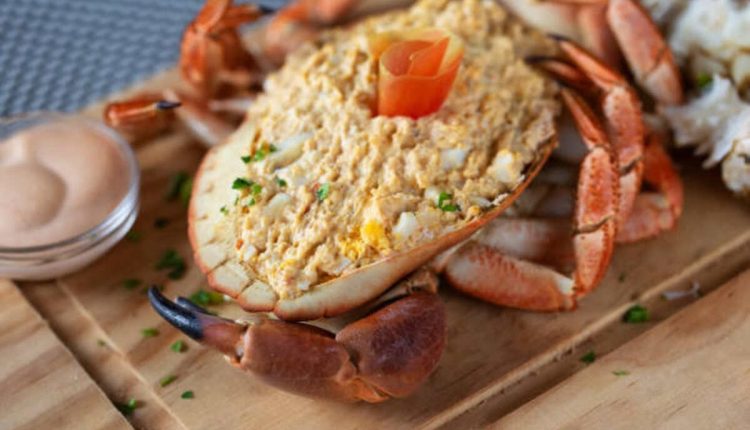Shellfish are ocean delicacies with many nutritional benefits. These foods include crustaceans such as shrimp, lobster, crab and mollusks such as oysters and clams.
Eating seafood may help improve heart health and lower the risk of coronary disease while eating contaminated seafood could result in foodborne illness.
Crab
A rocky shore can be an enchanting place, filled with shrimp and snails tucking away in their shells while hermit crabs evict other invertebrates with heavy-duty chelae that crush shells of lesser invertebrates like clams and limpets that might otherwise dry up during high tide.
Hermit crabs find and adopt new homes through an intricate, choreographed process called “shell exchange.” The giant crab initially locates and moves into an ideal shell based on smell. After moving in, it passes the body off to another crab of similar size before doing it all over again.
Crab is an excellent source of protein, with each 100-gram serving offering 18 grams of meat and 223 calories from 11 grams of fat and 10 grams of carbohydrates. Unfortunately, breading and frying them adds significantly more calories, fat, and sodium than might otherwise be found naturally in their nutritional profile.
Shrimp
Exoskeleton of a shrimp (shell). It encases its meaty body and contains salty, crunchy textures filled with glutamates and nucleotides, which enhance the umami taste in foods. Furthermore, shrimp shells can also be cooked as flavorful additions to soups, stews, rice dishes, or vegetables to add texture, salty crunchiness, and mild salty notes – ground up for seasoning or left whole.
One situation when leaving the shells on is cooking quickly on a grill; their presence protects shrimp from overcooking by shielding them from direct heat.
When purchasing shrimp, the decision between shell on and shell off depends on cost and value. Shell-on is cheaper but requires an individual cook to peel each shrimp individually before cooking; buying pre-peeled will be more costly but saves cooks from sitting around their tables to peel their dinner. Furthermore, leaving the tail on can make for an attractive handle and add flavor while being cooked.
Lobster
Lobster is one of the star attractions at many seafood restaurants, boasting a firm texture and distinctively sweet flavor that can be eaten raw or cooked – with its tail, claws, and knuckles offering some of the most succulent meat. Lobster can be steamed, broiled, or grilled and seasoned with salt, pepper, paprika, or garlic for additional seasoning options.
Lobster bisque is an iconic lobster dish, suitable for serving over either rice or with fideos–delicate vermicelli-like pasta. F&W editor Mary-Frances Heck seasons her version with mirepoix, sherry, and herbs before simmering the lobster shells to produce an irresistibly briny stock.
Recent research found that soil microbes could be used to effectively degrade lobster shells, extract chitin, and produce N-Acetylglucosamine (GlcNAc) that inhibited Pseudomonas cinerea and Botrytis cinerea growth. Two isolates showed superior ability in deproteinizing, demineralizing, and cleaving lobster chitin under optimal culture conditions.
Snails
Name an edible snack or meal contained by a shell: lobsters, oysters, crabs, and shrimp, as well as clams, are just some examples of delectable ocean delicacies that are both flavorful and nutritional.
Gastropods are one of the world’s most diverse groups of animals, found almost anywhere on Earth. Depending on the species living in various habitats, species may be herbivorous, carnivorous, or omnivorous. Their eyes and ears may not function normally but possess vibration sensors.
Snails and other mollusks use their shells to protect from predators, conserve moisture, and build them out of calcium by eating spinach and turnip leaves, gnawing on limestone, or even sucking up in their manure. The process starts even before an egg hatches from its mantle gland, secreting an organic layer, which will later be biomineralized into its shell; once born, it can twist and turn to change its size as the body expands or contract depending on environmental conditions.
Prawns
Few crustaceans are as widely misunderstood as shrimp and prawns. Both decapods share ten legs, are found in fresh and saltwater worldwide, and belong to separate suborders: Shrimp are part of Pleocyemata, while prawns belong to Dendrobranchiata.
When purchasing unpeeled prawns, one of the easiest ways to distinguish them from shrimp is to look at their shells. Shrimp tend to feature intertwined segments on their bodies, while prawns’ pieces are more distinct and significant.
If your recipe calls for whole, raw prawns with their heads, tails, and shells attached, choose wild-caught options to ensure sustainably harvested seafood with optimal flavor. When it comes time to prep these tasty treats for consumption, follow a few simple steps – remove their heads (you could save this meat for use in making broth!); peel each one carefully from its head end down towards its belly until complete.


